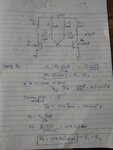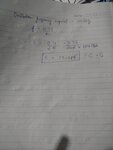akshathavenkatesh
Newbie level 4
I want to design an astable multivibrator having oscillation frequency -300kHz. I have attached the calculation that I've done to achieve the target frequency and this works in LTspice . According to my understanding of an astable multivibrator, this is how it operates- initially I'm assuming one of the transistors to be on , say Q1 so now the potential at the collector of Q1 is 0V ideally and C1 starts charging through R1 and since C1 is connected to the base of Q2 , when the voltage reaches 0.7 V, Q2 switches on and C2 starts charging and this cycle continues . Could you let me know if I'm making some mistake in analysing this circuit.

